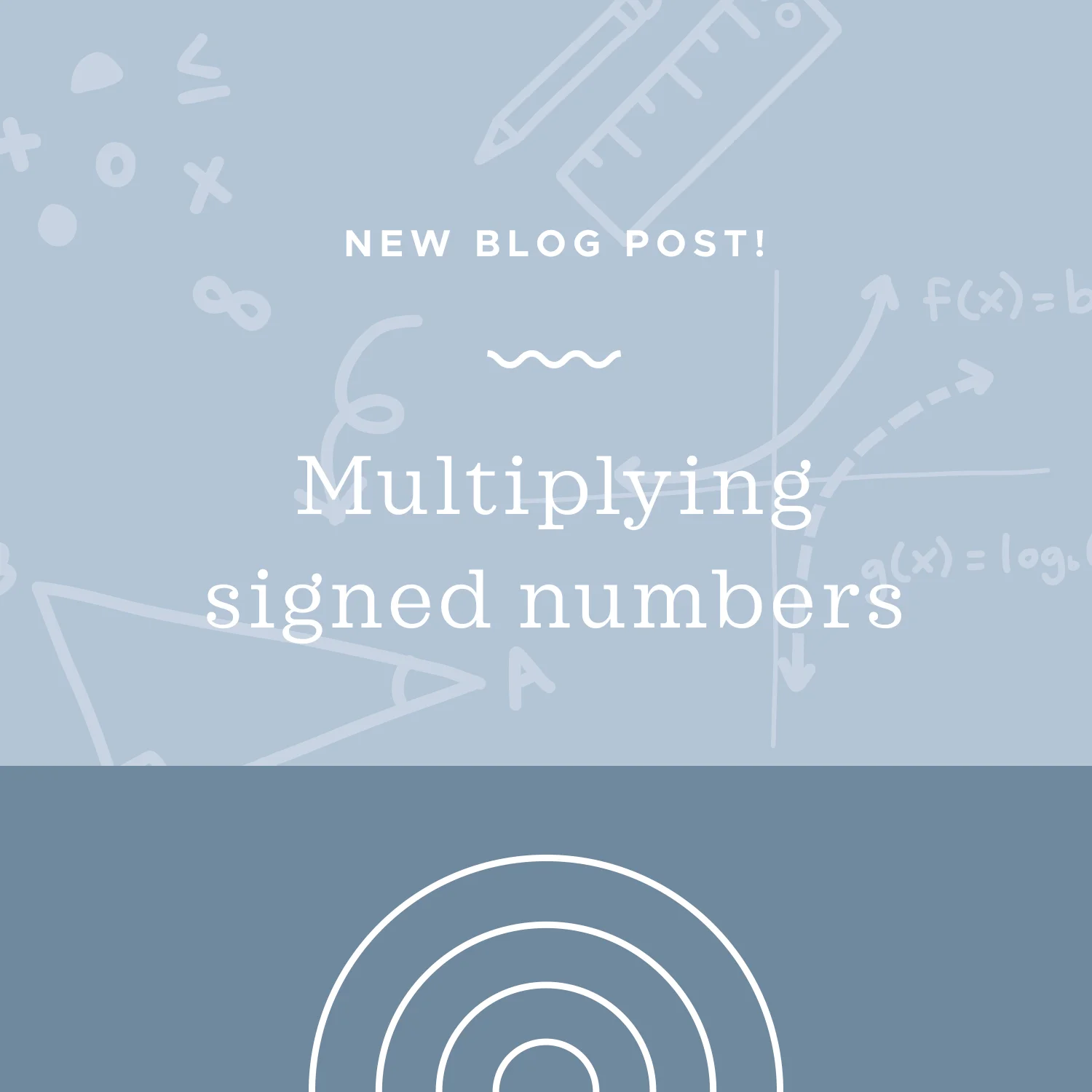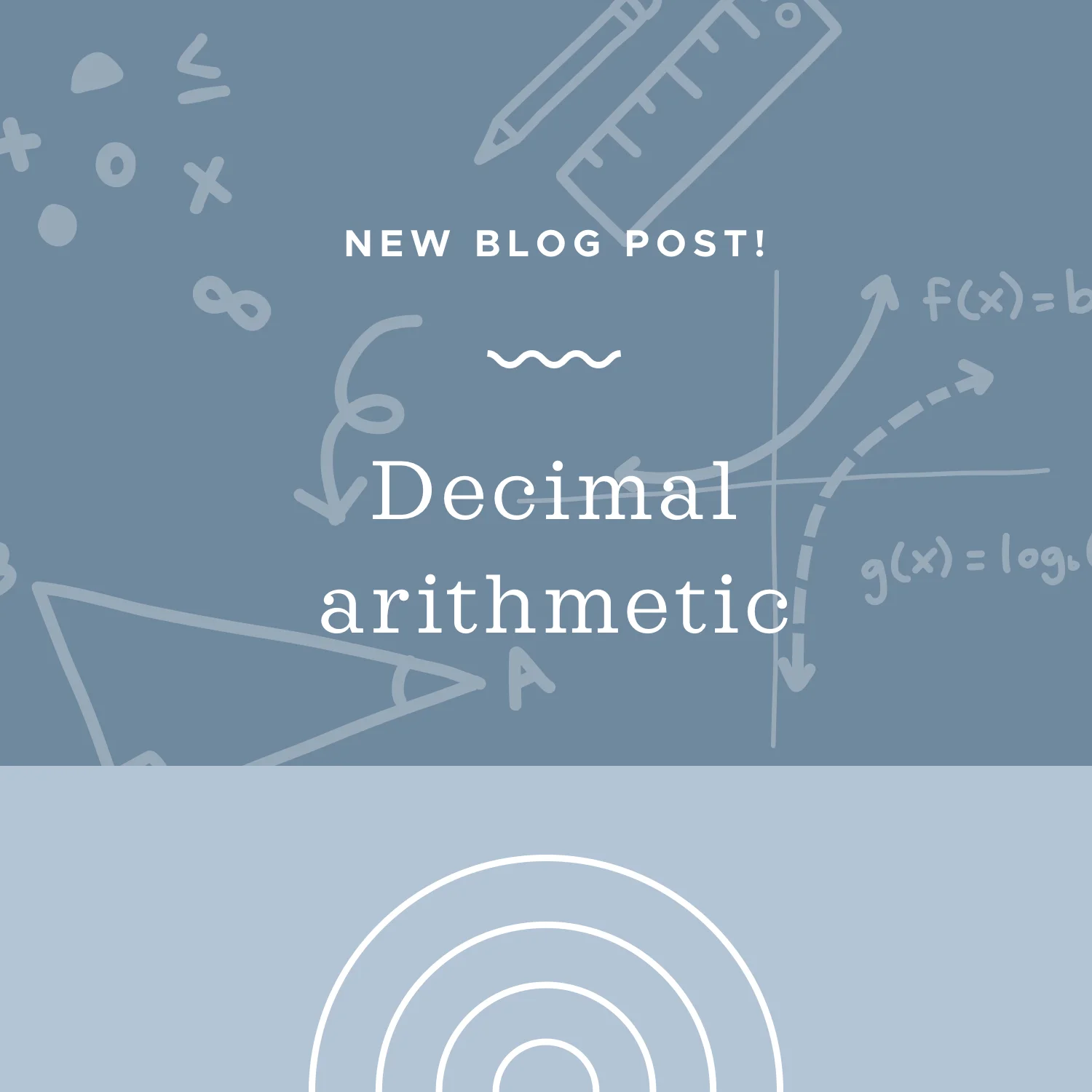Think about signed numbers just as positive and negative numbers. Positive numbers have positive signs (even though we often write positive numbers without actually putting a positive sign in front of them), whereas negative numbers have negative signs. So 3, 7, and 11 are all positive numbers, but -2, -6, and -9 are all negative numbers.
Read MoreWhen you multiply two numbers in scientific notation, you want to follow the same set of steps each time: 1) Multiply their decimal numbers, 2) Multiply their powers of 10. By the rules of exponents, we add the exponents when we do this, and 3) Express the results together in proper scientific notation.
Read MoreYou’ve already learned several ways to classify a whole number: as positive, negative, or 0; as the opposite of a number, in terms of the whole numbers by which it’s divisible, and in terms of its multiples. Another way to classify a whole number greater than 1 is as either a “prime” number or a “composite” number. A whole number will either be a prime number or a composite number, but it can’t be both.
Read MoreWhen we talk about the “divisibility” of a whole number, we’re just talking about the whole numbers that divide evenly into it. As an example, 5 divides evenly into 15 three times, since 15/5=3, which means we can say that 15 is “divisible” by 5. In this lesson we’ll look at divisibility rules for the numbers 2-10.
Read MoreUnit multipliers are what we use to convert one set of units to another. A really easy example is using a unit multiplier to convert feet to inches. We’ll be multiplying by fractions, remembering to put on the top (the numerator) the units we want to keep, and we put on the bottom (the denominator) the units we want to get rid of.
Read MoreWhen we talk about the “opposite of a number,” we’re specifically talking about the positive and negative versions of the same number. Now that’s not a technical definition by any means, so let me show you what I mean.
Read MoreAs a reminder, signed numbers are positive and negative numbers. When we multiply signed numbers, therefore, there are three possible combinations. Multiplying numbers with the same sign will give a positive result, but multiplying numbers with different signs will give a negative result.
Read MoreA fraction may look like a completely different kind of number, but the way we need to think about it is just as “part of a whole”. A fraction always has two numbers: the top number, which is called the “numerator,” and the bottom number, which is called the “denominator.”
Read MoreDividing one number by another in scientific notation is really similar to multiplying two numbers in scientific notation, because we’re basically following the same steps. First, we’ll divide their decimal numbers, then we’ll divide their powers of 10. By the rules of exponents, we subtract the exponents when we do this. Finally, we express the results together in proper scientific notation.
Read MoreAs a reminder, signed numbers are positive and negative numbers. When we divide signed numbers, therefore, there are three possible combinations. We could be dividing 1) two positive numbers, 2) two negative numbers, or 3) one positive number and one negative number. When the signs are the same, the quotient will be positive, but when the signs are different, the quotient will be negative.
Read MoreIn this lesson, we're going to focus on particular kinds of fractions. We'll start out by talking about positive fractions, and then we’ll deal with negative fractions at the end of the lesson. Up until now, most of the fractions we’ve dealt with are what we call “proper” fractions, where the numerator is less than the denominator.
Read MoreWe can add and subtract mixed numbers, each of which is the sum of a whole number and a fraction. When we need to add or subtract mixed numbers, we deal with the whole numbers separately from the fractions, and we find a common denominator for the fractions.
Read MoreYou can think about radicals (also called “roots”) as the opposite of exponents. We already know that the expression x^2 with the exponent of 2 means “multiply x by itself two times”. The opposite operation would be “what do we have to multiply by itself two times in order to get x^2?”
Read MoreWith scientific notation, we’re able to express really really big numbers without all the digits and write a simpler number that quickly tells us how big the number is. So scientific notation can be used to express really, really big numbers, but it can also be used to express really, really small numbers.
Read MoreIdentity numbers are numbers that don’t change the “identity” of the original value. The identity for addition is 0. The identity for multiplication is 1. The reason is that you can add 0 to any number and it doesn’t change the original value, and you can multiply any number by 1 and it doesn’t change the original value.
Read MoreThe reason we want to reduce fractions to lowest terms is that even though a fraction like 630/945 is actually the same as 2/3, that isn’t obvious to us when we look at it since the numbers are so big. But if we simplify that larger fraction down to 2/3, then we’ll be able to easily tell that we have “2 out of 3 parts.”
Read MoreWe can add, subtract, multiply, and divide decimal numbers. Addition and subtraction of decimal numbers works the same way as whole number addition and subtraction; we just need to make sure that we line up the decimal points.
Read MoreThe reciprocal of a fraction is what you get when you turn the fraction upside down. We first saw the reciprocal when we learned about dividing by fractions, because that fraction division process required us to multiply by the reciprocal. In other words, what you get when you switch its numerator with its denominator. So the reciprocal of 3/4 is 4/3.
Read MoreRemember that you learned previously that a prime number is a whole number greater than 1 which is divisible by only 1 and itself. In contrast, a composite number is a whole number greater than 1 which is divisible by 1 and itself, but also by at least one other number. This lesson is all about prime factorization and product of primes, so we’ll define what these mean. Before we do that, however, we need to talk about factors.
Read MoreA common factor of two positive whole numbers is a number that divides evenly into both of them. Their greatest common factor (sometimes abbreviated GCF) is the largest number that divides evenly into both of them. Another name that’s used for “greatest common factor” is “greatest common divisor” (sometimes abbreviated GCD).
Read More





















